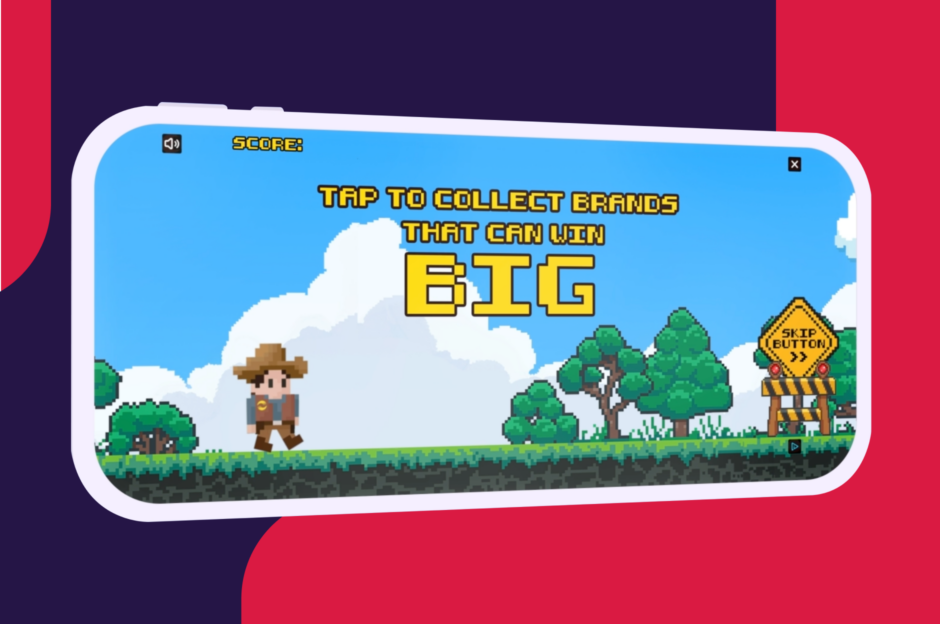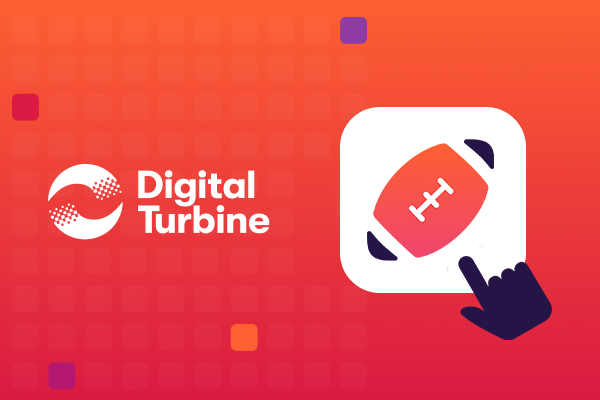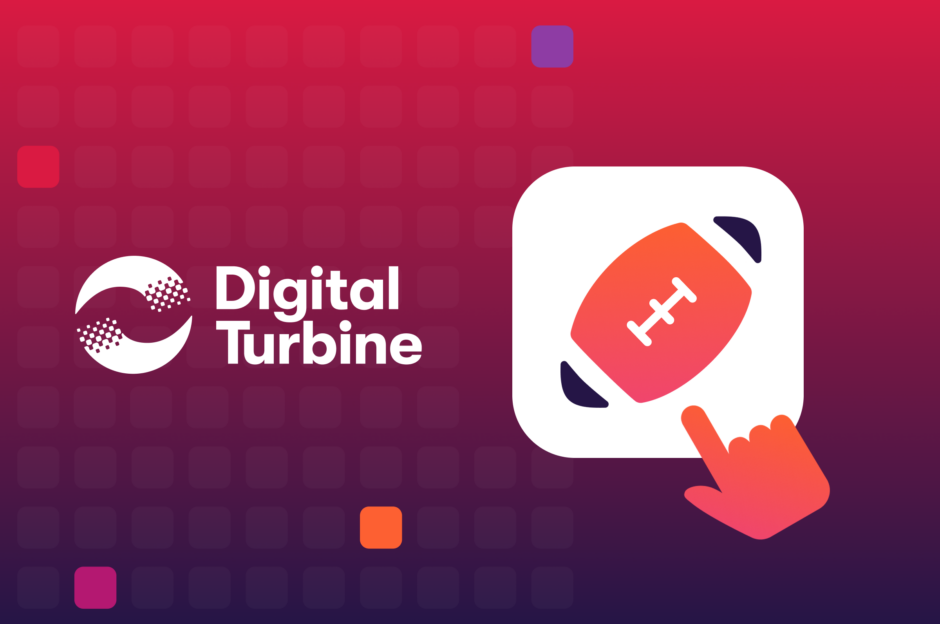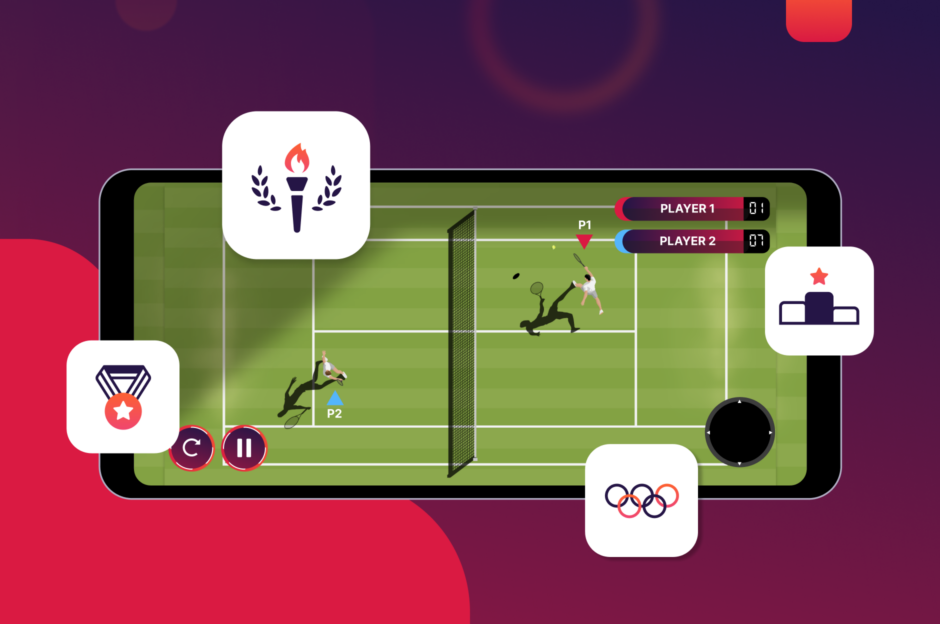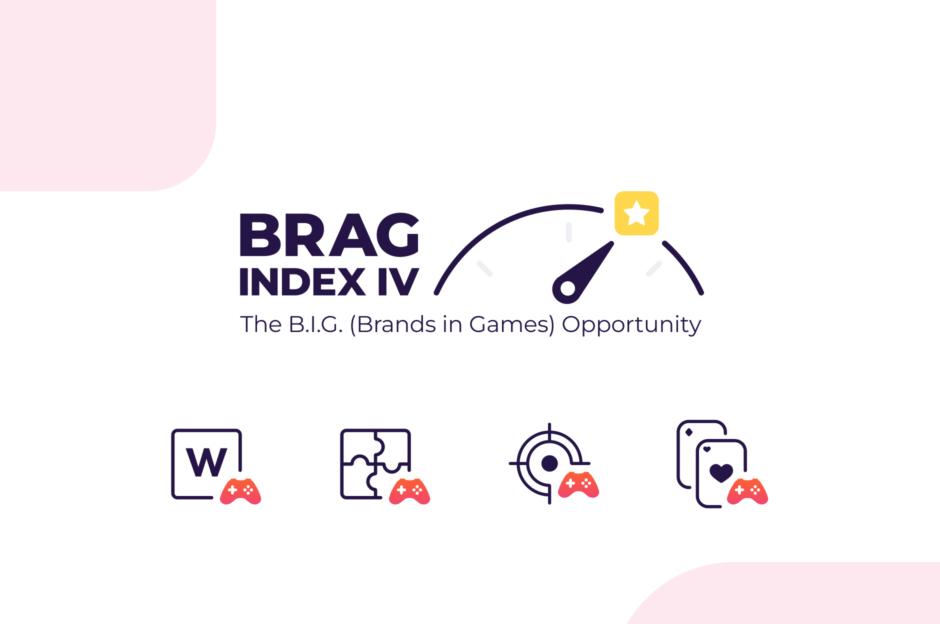Rewarded Video, Playable, Banner – Which Ad Format is Best for You?

Whether you’re a developer or a brand, you’ve hopefully already considered in-app advertising as a valuable opportunity for monetization or to reach your target market. Apps and mobile games, in particular, have provided easy access to expansive audiences on devices they use all day. Given the wide array of apps, there are multiple mobile ad formats to pick and choose from. Some formats are better suited for specific objectives or apps than others so it’s important to understand each format before deciding what will be best for your advertising and monetization goals.
Rewarded Video
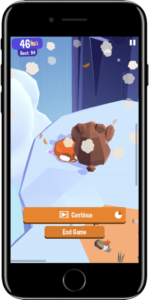 A rewarded video ad is a video that the user can watch in exchange for an in-game reward, including in-game currency, an extra life in a game, or extended playtime in a game, or an article or content in news or other types of apps. eMarketer’s Mobile In-Game Advertising report states that most developers that utilize in-game advertising for monetization use rewarded video. Only 15% didn’t use it at all while the rest of them did so with other types of ads.
A rewarded video ad is a video that the user can watch in exchange for an in-game reward, including in-game currency, an extra life in a game, or extended playtime in a game, or an article or content in news or other types of apps. eMarketer’s Mobile In-Game Advertising report states that most developers that utilize in-game advertising for monetization use rewarded video. Only 15% didn’t use it at all while the rest of them did so with other types of ads.
Why choose rewarded video? It’s what users prefer.
Rewarded video ads allow for an uninterrupted experience for users. Users prefer the chance to opt-in so they can feel like they’re gaining something in exchange for spending some time watching an ad. A survey conducted by Jun Group found that rewarded video was the favorable ad choice among mobile app users in the United States by wide margins.
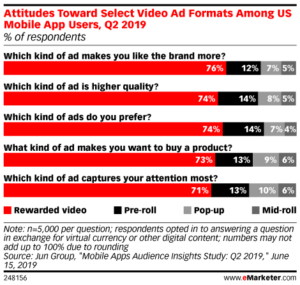
Advertisers also like rewarded video because completion and install rates are usually very high. As a result, publishers can see increases in both overall ad revenue and eCPMs. They can grow their earnings without having to compromise their users’ experience.
Playables
Playable ads let users interact with an app’s main features before installing it. Typically used in mobile games, playables allow users to experience a preview of the real gameplay. After the “micro-game” ends, a call to action (CTA) is shown. Generally used by mobile game app marketers, playable ads offer audiences a snippet of the real gameplay, ranging from fifteen seconds to one minute. Once the snapshot of the game ends, a call to action (CTA) is displayed so the user can install the game.
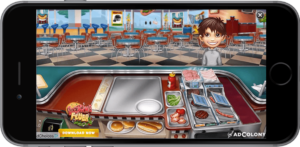
Why choose a playable ad? Users can try an app in a fun and engaging way.
When it comes to marketing a mobile game, playable ads are an essential creative. A well-executed playable can result in high click-through rates, CPMs, and most importantly, installs. Because the user gets to try out the game, they can make an informed decision before installing, which could lead to higher retention rates.
Furthermore, not all playable ads promote other games. In our What to Expect in Mobile Advertising in 2020 article, we predicted that non-gaming app developers will warm up to using playable ads in their advertising efforts. Users will be able to experience a demo or guided tour and not just a static representation of the app. Demand for interactive and engaging ads is on the rise so it’s important to work with partners who have the innovative technology to create these ads.
Banners
One of the oldest and most commonly used forms of mobile (and digital) advertisement, banner ads are placed at the top or bottom of the screen with static text and graphics. These ads are on screen while users are interacting with the app, and can refresh automatically after a certain period of time.
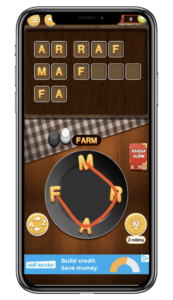
Why choose a banner ad? It’s the perfect complement to video or interactive ads.
If you need a simple solution for advertising, banner ads are a solution to get immediate brand recognition. For developers, this type is also easy to integrate into an app for monetization. Banners can be used as the primary monetization tool especially for casual or hypercasual games that don’t have an internal purchase economy, but for most games, it’s best as a complement to video and interactive ads. Apps who offer banners alongside playables and rewarded video can provide brands or games the opportunity to reach audiences at different touchpoints and with varied creatives.
Interstitials
Interstitial ads are interactive video or display ads that cover the interface of an app. These ads will usually pop up during transition points like in between activities or game levels. Interstitials offer full-screen coverage which is what differentiates them from other ad types like native and banner ads.
Why choose an interstitial? It offers the potential to drive higher engagement rates.
Because these interstitials are full screen, users are forced to interact with them by clicking through, installing the game or app, or closing the ad. This leads to higher click-through rates (CTR), installs, and ultimately, revenue. Interstitials also often contain “end cards,” a final ad screen with a call-to-action. End cards offer various ways to engage users like tapping for directions to a store, installing an app, or leading to a landing page for more information. This end card gives a second experience to further increase engagement rates.
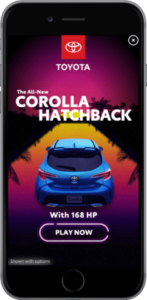
Interstitials are useful for developers who prefer to gate content like the next level of a game or an app feature. For interstitials to be most effective, it’s important to be mindful of the frequency of these ads. They should also be strategic of the timing of interstitials by not interrupting users’ activity and placing ads during natural breaks. Overusing ads could frustrate users and lead to shorter usage times or uninstalls.
Sign-Up
straight to your inbox.
